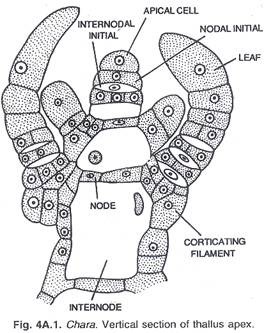Growth of Agro-Forestry in Arid Zone!
Agro-forestry implies the integration of farming with forestry practices on the farm to the benefit of agriculture. There is much common between agriculture and forestry which together with animal husbandry form an interrelated, interconnected and interdependent area, because all these are dependent on land.
Agro-forestry may be defined as practising agriculture and forestry- together. Tree plantation in agricultural fields ameliorates the microclimate and increase productivity of agricultural lands.
According to International Council for Research in Agro-forestry (ICRAF) “Agroforestry is a system of land use where woody perennials are deliberately used on the same land management units as annual agricultural crops and/or animals, either sequentially or simultaneously, with the aim of obtaining greater outputs on a sustained basis”.
Agro-forestry, therefore, in its proper sense means that woody plants, agricultural crops and/or cattle are obviously ecologically interdependent. Agro-forestry is a new name where simultaneously the same land is used for agriculture, forestry and animal husbandry.
A good example of agro-forestry in arid zone is growing of field crops like pearlmillet, legumes and oilseed crops in a field predominated by Prosopis cineraria (khejri) and Zizyphus sps. (Bordi). Agro-forestry has been in practice since decades in India under different terminologies,. Taungya in north and north east India and Kumri in south India.
In this system, the agricultural crops are taken in the new plantations, in between the tree rows for 2-3 years and then shifted to new plantations sites. The farmers take care of the tree seedlings by weeding around the plant and protect them for livestock.
The crops provide micro-climatic conditions to the saplings. The crop residue enrich the soils especially when legume crops are taken. But in Indian arid zone this practice is altogether different.
Biological Principles in the Selection of Forest Species and Agricultural Crops:
In setting this system the main problem is the inherent potentiality of competition among the different types of species for solar energy, nutrients and water. We must, therefore, in agro-forestry address ourselves to the selection of species that are compatible with each other and indeed complement each other. The object should be to optimize the joint productivity of both agricultural and forest crops.
The species chosen for agro-forestry should have the following characteristics:
(i) They should tolerate relatively high incidence of pruning, i.e., their photosynthetic efficiency should not decrease with heavy pruning.
(ii) They should have a low crown diameter to bole diameter ratio, i.e., the width of the crown should be small relative to bole diameter.
(iii) They should be light branching in their habit,
(iv) They should be tolerant of side shades,
(v) Their phyllotaxis should permit the penetration of light to the ground,
(vi) Their phenology, particularly with reference to leaf flushing and leaf fall, should be advantageous to the growth of the annual crop in conjunction with which they are being raised,
(vii) The rate of litter fall and litter decomposition should have positive effects on the soil,
(viii) Their morphology should be such that they retain or improve those characteristics which reduce competition for solar energy, nutrients and water,
(ix) Their root systems and root growth characteristics should ideally result in exploration of soil layers that are different to those being tapped by agricultural crops.
The same procedure applies to the agriculture crop components of the agro-forestry.
Points should be kept in mind while selecting suitable species for firewood in arid zones are:
i. Multiple purposes plants that have uses in addition to providing fuel,
ii. Plants that adapt well to different sites, that establish easily, and that require little care,
iii. Plants not consumed by goats and wildlife,
iv. Nitrogen fixing ability,
v. Rapid growth,
vi. Ability to coppice,
vii. Ability to produce wood of high calorific value that burns without sparks or toxic smoke,
viii. Ability to grow successfully in a wide range of environments and
ix. Yield other products and benefits.
Cautions: (Not to Introduce):
Species that are such aggressive pioneer that they spread as weeds or compete with agricultural crops or harbour agricultural pests.
Shrubs and Trees Suitable for Agro-Forestry in Arid Zones:
In agro-forestry properly distributed tree growth in the farm acts as a foster mother to agriculture. In hot dry inhospitable arid climates, tree growth conserves soil moisture, improves soil fertility, increases atmospheric humidity and protects field crops against scorching and desiccating winds, thereby stepping up agricultural yields.
Sometimes shrubs and trees play a dual role in the forage supply, serving both a shade for grass and as forage themselves. The trees of multipurpose value particularly for arid zones are enumerated in table 14.2.
Spineless CACTII as Fodder:
Opuntia ficusindica yield green fodder to the extent of 7.34 t/ha where a 3 year old plant produced as much as 30 t/ha green forage. The green forage from the cactus contained 6.80% crude protein. It appears suitable for growing in hot arid zone and drought-prone area.
The best tree and crop species combinations for 300 to 500 mm rainfall regions in agro-forestry systems will be:
i. Prosopis cineraria + Pennisetum typhoid’s, or Vigna radiata, or Sesamum indicum, or Arachis hypogea, or Ricinus communis
ii. Acacia nilotica / A. Senegal + Vigna aconilifolia
iii. Albizzia lebbek + Vigna aconilifolia, or Cyamopsis tetragonoloba, or Vigna radiata,
Or
Azadiracta indica + Arachis hypogea, or Sesamum indicum, or Ricinus communis.
iv. Eucalyptus camaldulensis + Vigna aconilifolia, or Cyamospsis tetragonoloba.



